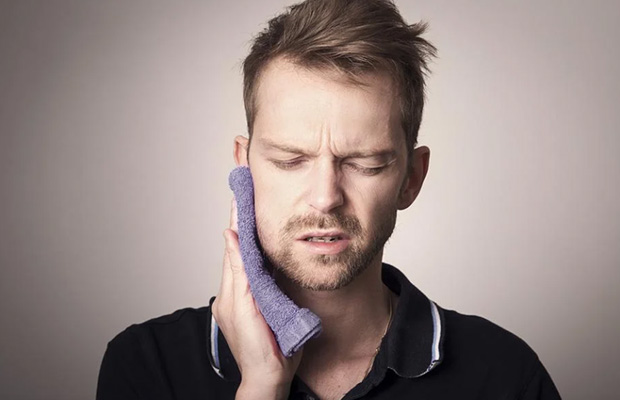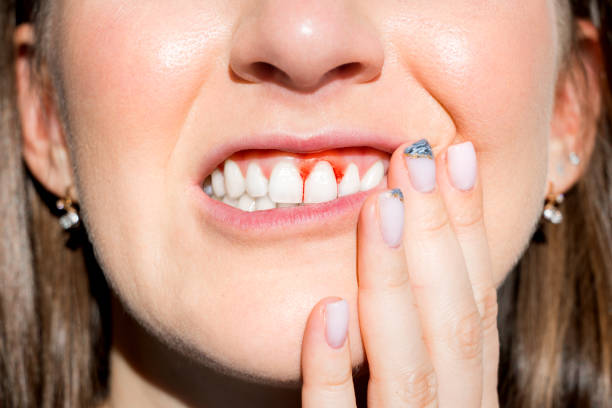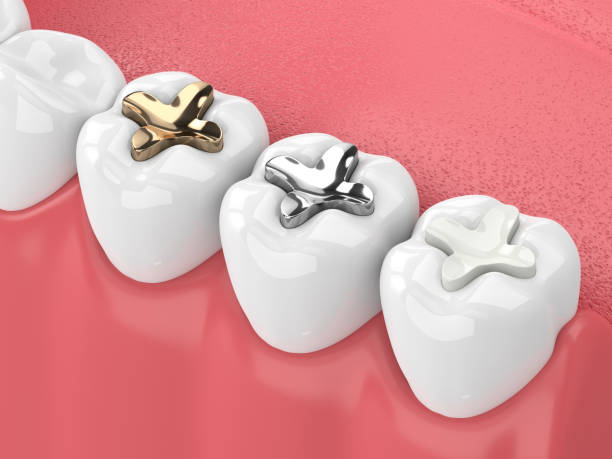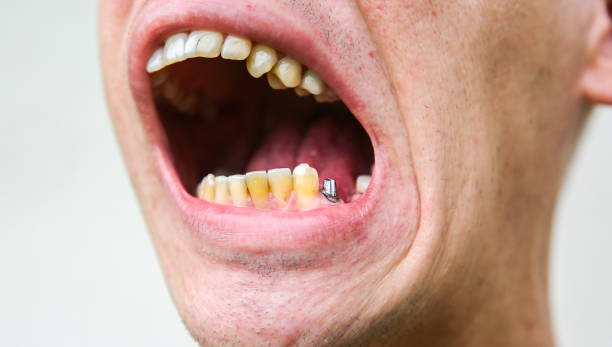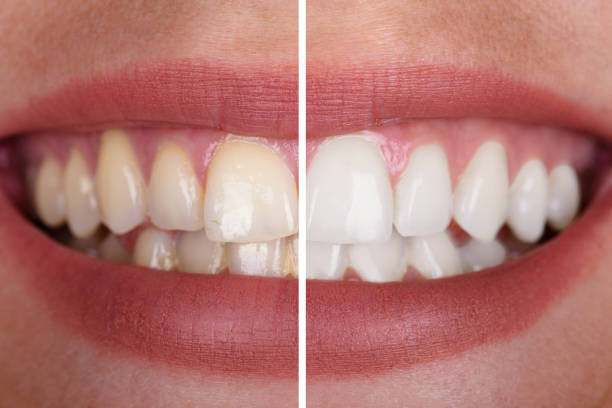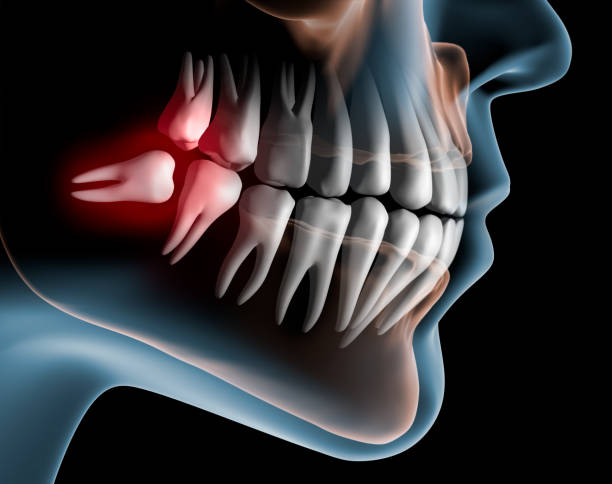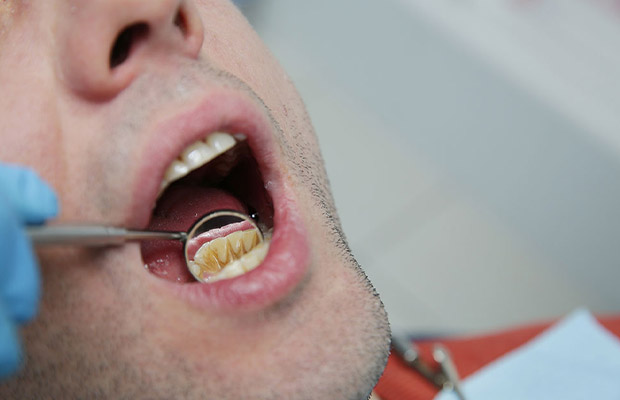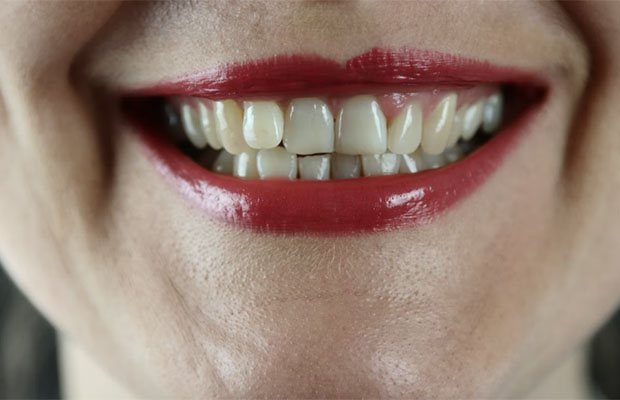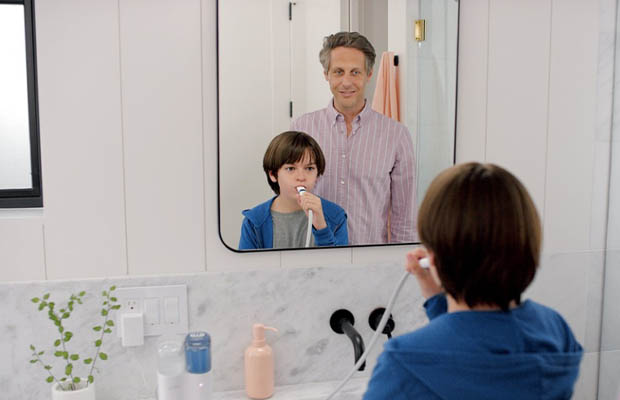A quick and affordable way to brighten your smile is with a teeth whitening treatment.
Almost everyone who chooses a teeth whitening method notices a moderate to significant improvement in the brilliance and whiteness of their smile. That being said, it still requires upkeep or “touch-ups” for a sustained effect and is not a permanent fix for discoloration.
In this article, we dissect every aspect of teeth whitening, including how much teeth whitening, the various treatment options available, and their associated risks.
Related Reading: How To Treat Burned Gums From Teeth Whitening?
Table of Contents
What Causes Discoloration Of Teeth?
There are several different causes of tooth discoloration. Exposure to specific foods and beverages (surface stains) is the most typical.
Teeth absorb color from foods and drinks through their divots, bumps, and grooves. Over time, this results in spots that are darker, yellower, and white.
The easiest stains to remove with routine teeth whitening procedures are surface stains.
The following are the most typical foods and drinks that leave surface stains:
- Coffee
- Dark tea
- Dark soda
- Red wine
- Dark fruits
- Fruit juices
The following factors, among others, can influence tooth color:
- Genetics
- Diseases
- Medical treatments
- Aging
- Amalgam restorations
- Medications, especially tetracycline
- Tobacco use
- Fluoride
Unlike surface stains brought on by dark-colored foods, these stains are typically deeper.
Price Cost Of Teeth Whitening
Depending on the product and the procedure used, the price of teeth whitening can vary considerably.
With a national average visit cost of $650 (pricing can range from $500 to $1,000), professional, in-office teeth whitening is the priciest option. The fact that it is done by a skilled dental professional, however, does help to ensure that you get the kind of outcomes you’re after.
At the other end of the price, spectrum is the over-the-counter strips and trays that you can purchase at your neighborhood pharmacy or grocery store. These products, which can cost anywhere from $20 to $100, are an appealing alternative for people looking to improve their smiles slightly without incurring the higher cost of in-office whitening. When using these less expensive, low-concentration peroxide whiteners, it’s crucial to keep in mind that results can vary greatly.
Professionally dispensed take-home kits may be a good option for you if you’re trying to find a compromise between in-office whitening and over-the-counter products. These kits, which are prescribed by a dentist and can cost between $100 and $400, may be able to produce results that are comparable to those you would receive from a dentist in-office.
Remember that the effects of teeth whitening are temporary, so you’ll need to keep getting treatments as they wear off if you want to keep your smile white.
Expert Whitening Vs. At-home Teeth Whitening Costs
Fortunately, there are many products on the market that can lighten stained teeth. Both professional and at-home whitening procedures are covered by this.
The price and efficiency of these products do, however, differ significantly.
Over-the-counter (otc) Teeth Whitening Costs
All people can whiten easily and affordably using OTC methods.
When compared to getting a professional whitening treatment at the dentist, these products require more work from you. However, medical care is less expensive by hundreds.
Be aware that OTC whitening requires more maintenance than professional whitening. Also not instantaneous are the results.
The most widely used over-the-counter teeth-whitening goods are:
1. Whitening Strips
Online or in a variety of physical stores, you can purchase whitening strips. They usually cost between $10 and $50 per package for several strips.
Put the strips over your teeth and let them stay there for about 30 minutes.
Usually, whitening strips are effective. However, some people have trouble keeping them in place. The use of whitening strips frequently results in increased sensitivity.
2. Whitening Toothpaste
The easiest method for teeth whitening is this one. Whitening toothpaste is typically used once or twice a day and contains small amounts of peroxide.
You most likely already use whitening toothpaste. If not, there are many reasonably priced alternatives available.
Most whitening toothpaste costs between $3 and $15, depending on the brand and whitening intensity.
The natural color of your teeth is unaffected by whitening toothpaste, and more severe stains are not removed. They have polishing agents that buff teeth and stain-removing peroxide.
This method is best if you have light surface stains or want to maintain your tooth color after a more intensive whitening treatment.
The most aggressive whitening toothpaste contains a blue covering. This chemical sticks to teeth and darkens their appearance without actually removing stains.
After using whitening toothpaste consistently for two to six weeks, you’ll notice improvements.
3. Whitening Trays
This option is aggressive and delivers results on par with those of professionals while also adding the convenience of at-home whitening. Compared to professional treatments like Zoom, the course of treatment is longer.
The price for custom whitening trays ranges from about $100 to $600.
You must see your dentist get an impression so that you can get personalized whitening trays. Custom trays that perfectly fit your mouth are made using this method.
To gradually whiten your teeth, you will use the bleaching agent and tray set that is provided.
Non-custom whitening trays are an additional option. These are available for $10 to $30 and don’t fit as snugly over your teeth. Uneven whitening and messier applications are disadvantages of non-custom trays.
At-home whitening kits usually increase your teeth’s sensitivity. Fortunately, desensitizing gels are available. If you have any questions about pain, talk to your dentist.
4. Led Teeth Whitening Products
Unusual at-home whitening techniques include LED whitening kits. In recent years, the demand for these kits has grown. They cost between $50 and $300.
This technique uses an LED light to expedite the whitening process and is non-invasive.
LED teeth-whitening products strengthen your teeth while removing difficult stains. Additionally, they deliver whitening results that are quick and efficient.
The teeth are first painted with a bleaching agent (typically one with a peroxide base) before the LED whitening procedure. The whitening agent is then activated by the LED light, which also initiates the chemical reaction.
This interaction causes the blue LED light to penetrate the enamel and remove any stains that may already be there.
It is very efficient to use LED lighting. They turn on instantly and don’t require any warm-up time.
Professional Teeth Whitening Costs
Costlier than at-home remedies are professional teeth whitening products. The average price for in-office whitening ranges from $262 to $1,180 per treatment.
The following are a few of the most widely used professional whitening techniques:
1. Boost
A minimally invasive procedure for treating discolored teeth is Opalescence Xtra Boost.
The gel works best on discoloration brought on by conditions like tooth trauma, prescription medication discoloration, and more. Also, it aids in removing surface stains.
With no need for specialized light, Boost uses a 38 percent hydrogen peroxide power bleaching gel.
You don’t need to be concerned that the gel will come off your teeth after it has been applied because it is sticky.
BOOST has a slightly lower risk of sensitivity because it contains PF. Potassium nitrate and fluoride are combined in this.
Opalescence is cheaper than Zoom (around $500 per treatment).
2. Zoom
Teeth can become up to 90% brighter with Zoom Whitening, which significantly whitens teeth. It is an FDA-approved teeth-whitening procedure that is completed in a dentist’s office and takes an hour.
An alternative to at-home whitening offered by Zoom is less aggressive. For up to 12 days, you’ll wear personalized gel-filled trays for several hours each day. Your home serves as the setting for treatment.
Professional Zoom procedures are quick, simple, and effective. Zoom can lead to tooth sensitivity, just like most whitening procedures.
The average cost of Zoom teeth whitening is between $300 and $600.
3. Kor Whitening
While removing all stains and discoloration, Kor restores oxygen to the teeth. It works particularly well to whiten teeth stained by tetracycline.
The initial phases of Kor’s care are carried out in a dental office. The additional therapies are carried out at home. You will wear the trays once a month after this phase is finished to maintain results.
Kor’s effectiveness is highly regarded by dentists, in part because the whitening trays fit over teeth comfortably. Thus, the chance of saliva dilution of the whitening gel is decreased. To maintain its potency, the gel is also chilled.
Zoom is a little more expensive than KöR. Treatment costs between $500 and $1,000.
Risks Of Teeth Whitening
When done as instructed, teeth whitening treatments are regarded as safe. Nevertheless, there are a few risks connected to bleaching that you should be aware of:
- Sensitivity: Temporarily becoming more sensitive to pressure, temperature, and touch can be brought on by bleaching. This most likely happens when bleach with a higher concentration is used for in-office whitening. Zingers are sudden, shooting pains that some people get down the middle of their front teeth. People with gum recession, significant tooth cracks, or leakage from defective restorations are most susceptible to whitening sensitivity. Additionally, redheads have been said to be particularly susceptible to tooth sensitivity and zingers, even if they don’t have any other risk factors. Whitening sensitivity usually only lasts for a day or two, but it occasionally can last for a whole month. In order to treat sensitive teeth, some dentists advise using toothpaste with potassium nitrate.
- Technicolor teeth: The natural color of restorations like veneers, bonding, or dental crowns is maintained while the teeth around them are bleached because they are not affected by bleach. As a result, people frequently have teeth that are described as “technicolor.”
- Gum irritation: More than half of people who use peroxide whiteners report having gum irritation to some extent as a result of the bleach concentration or coming into contact with the trays. Such irritability can last for a few days, but it usually goes away once bleaching is stopped or the peroxide level is lowered.
Does Professional Teeth Whitening Fall Under Insurance?
No. Whitening is viewed as a cosmetic procedure. This indicates that its primary goal is to enhance tooth appearance. It is not medically necessary.
Like the majority of procedures that are not medically necessary, the patient is in charge of covering all expenses.
To make whitening procedures more affordable, some dental offices offer payment plans.
For whitening and other cosmetic procedures, there are a few credit options available.
You can spread out your payments over time, even though you’ll still have to pay for the services out of your own pocket. You can apply interest or not.
Some Teeth Whitening Alternatives
Here are a few additional (and more costly) options for teeth whitening:
Dental Bonding
Minor damage to teeth or gaps between teeth can be filled with dental bonding. Usually, dental problems like fractures, gaps, or chipped teeth are fixed with it.
Bonding can lessen tooth discoloration in a manner akin to teeth whitening.
Dental bonding procedures cost around $300 to $600 per tooth (without insurance).
Veneers
The front of your tooth is covered by a thin, tooth-colored shell called a veneer. The shell modifies the tooth’s color, size, and shape.
In contrast to teeth that have been damaged, veneers can correct a wide range of cosmetic problems.
The most common veneer materials include porcelain and composite. Veneers made of porcelain are the most durable and realistic-looking choice.
Veneers cost much more than teeth whitening procedures. They cost anywhere between $659 and $1,618 per tooth. The costs are high, but the effects last up to 25 years.
What Food Shouldn’t Eat After Teeth Whitening?
By avoiding foods that can stain your enamel, you can maintain your pearly whites the best. “A good rule of thumb is that foods and beverages like berries, red wine, and sauces that would stain a white blouse will also stain your teeth. Sticky foods like pasta and bread, as well as sticky candies, can cause stains to form on the surface of teeth, according to Lowenberg. Instead, choose raw, crunchy foods that can mechanically remove surface stains from teeth, such as apples, celery, or carrots.”


